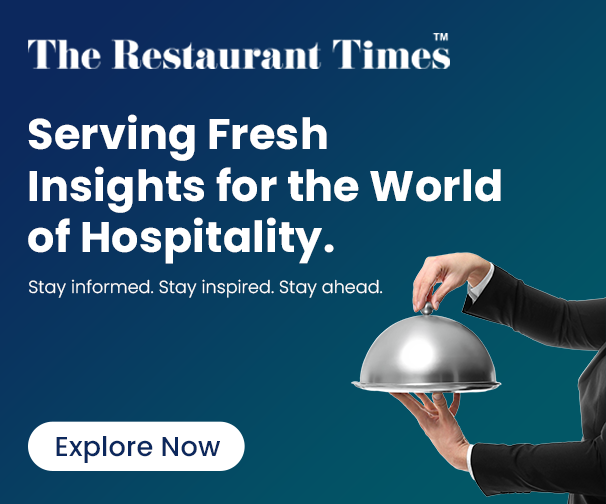Restaurant marketing has become overwhelmingly digital. Operators are told to chase followers, optimize reels, and spend on ads that compete with everything from fashion brands to pet videos. But while attention online gets divided, one thing hasn’t changed: customers still decide where to eat on foot.
That’s where most local restaurant marketing digital strategies fall short. They generate awareness but don’t always convert it into footfall. Online visibility doesn’t guarantee local relevance. And no amount of likes translates directly into full tables if there’s no local connection anchoring it.
Offline marketing fills that gap. It works at the neighborhood level—on sidewalks, inside community events, through referrals, and through visibility that doesn’t depend on algorithms. For restaurants built to serve a physical market, offline tactics remain the most reliable way to drive real traffic.
This guide lists the best restaurant marketing ideas and today’s most effective offline restaurant marketing strategies, from tactical flyer drops to strategic partnerships. Each one is designed to increase local visibility, attract the right customers, and maintain consistent foot traffic.
Let’s get into what works and why.
Location-Specific Offline Restaurant Marketing Ideas
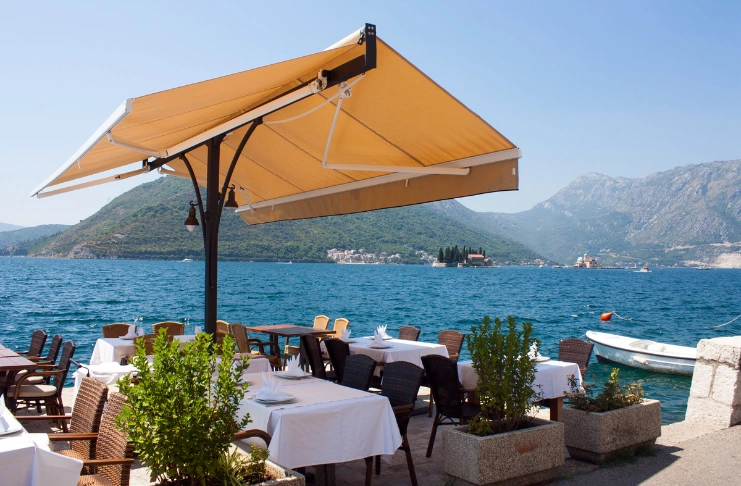
At the core of offline restaurant marketing is one principle: you need to be seen in the places where potential customers already are. No amount of fancy branding or high-tech solutions can replace a well-placed sign, a flyer in the right hand, or visibility at local events.
Here’s where offline marketing strategies can directly impact foot traffic, connecting your restaurant with those who live and work around you.
Distribute Flyers Strategically
Flyers are a timeless tool for driving immediate action. But the key is precision. A flyer handed out at the right time and location can directly convert passersby into paying customers. Instead of blanket distribution, target neighborhoods with high foot traffic, like those close to office buildings, busy shopping areas, or schools.
Use a clear call-to-action (CTA) on the flyer to encourage customers, such as a limited-time offer or a discount for new customers. Timing also matters: distribute flyers during rush hours or before local events to maximize visibility.
Advertise in the Local Newspaper

Despite the digital shift, local newspapers still hold sway in many communities. Whether in print or online, local newspapers are a trusted source of information for potential customers looking to support neighborhood businesses and improve local search results. Run ads in sections that are most relevant to your target audience, such as dining, events, or weekend activities.
Consider featuring your restaurant in a sponsored story that highlights your unique offerings. Run promotions alongside a feature to enhance visibility. Even online, local media channels continue to influence consumer decisions, especially for restaurants.
Sponsor Local Sports Teams
Local sports teams offer an excellent way to showcase your restaurant business and boost visibility within the community. Sponsoring a local team gets your brand in front of families and sports enthusiasts and positions your restaurant as a committed community player. Think jerseys with your logo, scoreboard advertisements, or event day partnerships where your restaurant offers food or discounts to attendees.
This type of sponsorship creates long-term associations between your brand and local pride, which is an effective way to generate goodwill and build a loyal customer base.
Partner with Local Organizations
Another strong tactic is partnering with local organizations. Collaborate with neighborhood groups, school fundraisers, or charity events to show your commitment to the community and attract loyal customers. This gives your restaurant visibility in a context that resonates with local customers and increases the chance of repeat visits.
For example, offering catering for an event or donating to a cause can elevate your brand’s reputation while engaging the community in meaningful ways. These partnerships can create lasting, positive impressions of your business that extend far beyond the meal itself.
Leverage High-Traffic Bulletin Boards
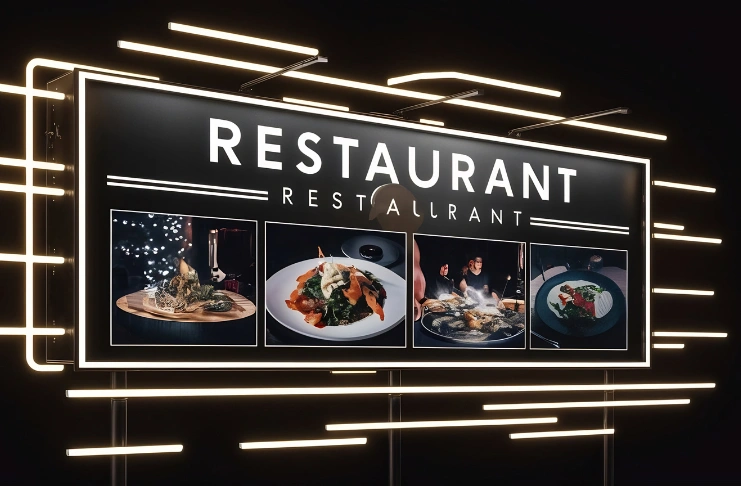
Bulletin boards are still an underrated source of local marketing. Whether inside coffee shops, gyms, or grocery stores, bulletin boards provide a low-cost but highly effective way to advertise. They cater to customers who live or work nearby and are more likely to become regulars due to proximity.
Make sure your flyer stands out. Use bold, clear graphics, and keep your messaging brief but compelling. Consider including a QR code linked to a special offer or menu item to drive immediate action.
Billboards Near Commuter Zones
Billboards may seem old-school, but when done right, they remain one of the most powerful visibility tools in any market. Placing a billboard in a high-traffic commuter zone can put your restaurant in front of hundreds, if not thousands, of local consumers every day.
Focus on strategically placing billboards near busy intersections or highways leading into your neighborhood, ensuring that drivers see your message repeatedly. Keep the design simple and the CTA clear.
Restaurant Signage that Sells

Your restaurant’s exterior and signage are among the most critical marketing tools you have. They are the first thing a potential customer will see when they walk by and serve as their first impression.
Invest in clean, professional signage that’s visible from a distance and easy to read, especially at night. Ensure your branding is consistent with the atmosphere inside. The signage should invite curiosity while making it clear what kind of dining experience the customer will get.
Whether it’s a welcoming neon sign, a well-lit outdoor menu board, or simple directional arrows for foot traffic, it’s important that your sign attracts attention and converts it into visits.
If done right, these location-based strategies help embed your restaurant within the local fabric, ensuring you remain top of mind when hunger strikes.
INDUSTRY INSIGHT
| Recent data highlights the continuing strength of offline marketing. In 2024, the U.S. saw a notable increase in offline marketing spend, with a rise of 11% year-on-year, reaching $551.9 billion. Traditional media channels such as television, radio, and direct mail remain integral to marketing strategies, with 54% of U.S. marketers planning to boost direct mail budgets in 2025. Print media and radio advertising are particularly resilient, with 82% of consumers trusting print ads. With these records, it’s evident that offline channels still offer a unique ability to build trust and connect with audiences on a personal level. |
Community Engagement and Events
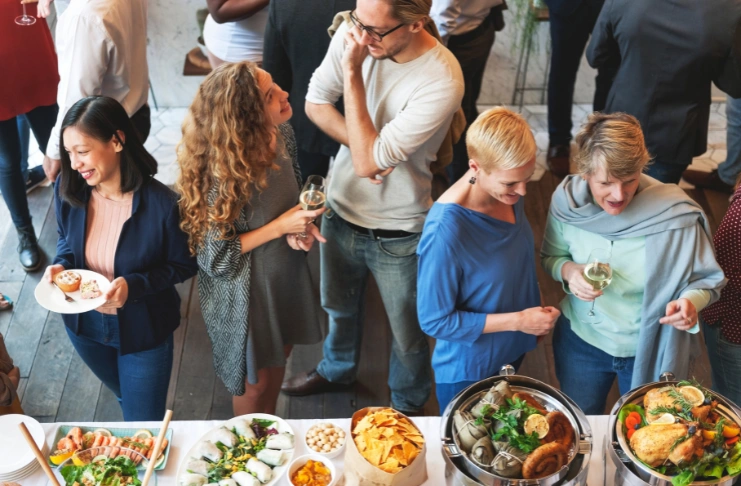
If your restaurant exists in a neighborhood, it needs to matter to that neighborhood. Most restaurants spend time trying to attract customers who’ve never heard of them, instead of becoming essential to the people who pass their doors every day.
Here are a few offline restaurant marketing ideas that will help you earn relevance through presence:
Host Events That Serve a Purpose
Don’t create events for the sake of promotion. Instead, align with dates and occasions your community already cares about. For example, host a Super Bowl viewing night with bundled platters, or a Thanksgiving week offer for local families. These events are a practical way to drive traffic during predictable demand spikes.
The goal is simple: give people a reason to walk in. Set a date. Keep the menu tight. Promote through in-store signage, email, and physical flyers distributed through local businesses and apartment complexes nearby.
Join Local Food Festivals
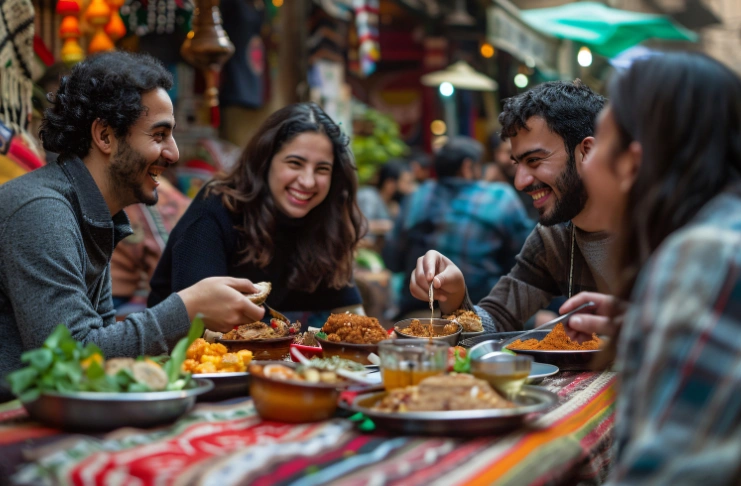
Food festivals are high-traffic, low-risk ways to introduce your restaurant to new customers who are actively looking to try something different. The key is to bring one or two standout menu items that are easy to taste and remember.
Bring signage, simple packaging, and printed materials with a discount code for in-store use. Keep your costs low and your output efficient. Focus on exposure, not immediate profits.
Build Relationships with Schools and Colleges
Public schools, high schools, and universities can open steady traffic if you approach them with the right partnerships. Sponsor school events, provide food for PTA meetings, or run group discount nights for student organizations.
This will help you build access. Because most of these programs rely on local support, you will gain visibility to students, faculty, and families who are often looking for consistent, affordable food options near campus.
Run Fundraisers with Nonprofits

Organize in-restaurant fundraiser nights for local organizations. Choose groups with a strong community presence, like youth clubs, housing associations, or food banks. A standard format is giving back 10–20% of sales from a designated night.
These events are win-win. The organization markets the event to its audience, and you benefit from new foot traffic and local exposure. Train your team to mention the cause to every guest that night. This improves conversion and builds credibility.
Sponsor Small-Scale Local Events
Think smaller: block parties, youth sports tournaments, local art walks. These events may not draw a crowd, but they build awareness through repetition. A banner on a league field or your logo on community event posters will help you stay visible where decisions are made.
If your name comes up when a group plans a meeting or birthday dinner, that’s the kind of marketing no digital ad can buy.
Local Partnerships and Cross-Promotions

One of the most overlooked offline restaurant marketing ideas is aligning with local businesses to extend your reach and relevance. These are not casual collaborations. When structured properly, they function as micro-distribution networks for your brand, delivering visibility, foot traffic, and customer trust.
Create Cross-Promotions with Nearby Businesses
Start within a one-mile radius. Identify nearby businesses that share your target audience but aren’t competitors (gyms, salons, co-working spaces, bookstores, bike shops). Propose a mutual exchange: you hand out their flyers or offer discounts on receipts; they do the same in return.
Keep the offer straightforward: 10% off with a partner receipt, a weekday lunch discount for office workers, or limited-time offers tied to a new product launch. Print simple, durable marketing materials and distribute them consistently. This kind of physical presence still outperforms digital noise in high-traffic zones.
Align with Office Parks and Corporate Campuses
If you’re within range of large office parks, secure partnerships for regular lunch orders, weekly catering, or exclusive in-office offers. Visit HR teams, admins, and office managers with print menus and samples. Provide volume-based pricing and include materials they can post in communal areas.
The best part is that this strategy isn’t a one-off transaction. It builds a repeat sales channel. Office workers who discover your menu through a lunch drop are more likely to become repeat customers, especially if you’re close by and offer consistency.
Offer Co-Branded Packages with Local Vendors
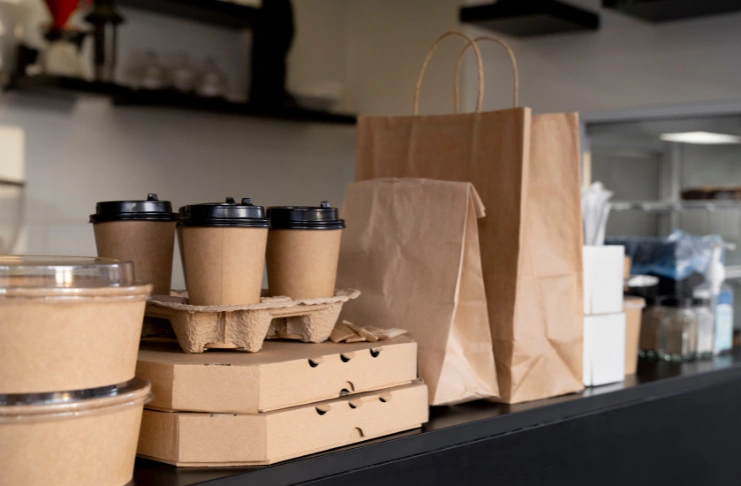
Work with local florists, breweries, dessert shops, or photographers to build co-branded packages. For example, a dinner-for-two bundle paired with a bottle from a local winery, or a Valentine’s Week special with roses from a neighborhood florist.
Make it seamless. Keep pricing clear, branding professional, and promotion split across both partner channels.
You reduce your own marketing spend while expanding access to another customer base—and that’s where cross-promotion delivers measurable ROI.
Collaborate with Apartment Complexes and Leasing Offices
Reach out to leasing managers in high-density housing complexes. Offer move-in welcome kits with menu inserts or free meal coupons for new residents. Set up sampling days in communal lounges, or offer catering for tenant appreciation events.
Most complexes are open to this if the offer is structured and makes them look good. In return, you build habitual use among a hyper-local audience.
Build a Network of Referral Partners

Barbers, dog groomers, nail salons, and laundromats are all high-frequency, wait-time businesses where people have time to notice and act on restaurant offers. Leave there clean, high-quality postcards or menus with exclusive offers. In exchange, offer them complimentary meals or in-store visibility.
Referral networks work when the business owner personally endorses your food. So, deliver a sample first. If they like it, you’ve earned a channel.
Support Other Local Businesses in Events and Visibility
When other local businesses host events—product launches, anniversary sales, sidewalk pop-ups—offer your food, drinks, or branded samples as part of your marketing efforts. Your cost is lower than sponsoring large events, but your visibility is often higher. These small gatherings often produce better conversions because the audience is tight and intentional.
Always bring signage, business cards, and a physical coupon. And track redemptions to measure return.
Remember: Strong local partnerships don’t dilute your brand. They amplify it. In a competitive food industry, it’s not the loudest voice that wins. It’s the one recommended by someone the customer already trusts.
In-House Promotions That Convert

Most restaurants invest in drawing people in, but few invest enough in what happens once they arrive. Smart offline restaurant marketing continues inside the restaurant, where the environment, materials, and experience are engineered to trigger more than one sale.
Design Offers Around Foot Traffic Patterns
Start with timing. Use physical signage at the entrance, counter, and tables to promote limited-time offers tailored to the daypart (weekday lunch bundles, happy hour appetizers, late-night dessert combos, etc.). These promotions must be built around real customer behavior.
Use tabletop inserts, point-of-sale stickers, and printed receipts to reinforce the message. The more visible and relevant the offer, the more likely it is to convert.
Introduce a Print-Based Loyalty Program
You won’t believe it, but a basic stamp card still works and is often better than app-based alternatives. Design a clean, durable loyalty program with an immediate incentive (“Buy 5, get one free” or “Dine 3 times, get 20% off on your next visit”).
This system works especially well for counter-service and QSR-style restaurants, where repeat visits can be easily tracked. It builds a habit and gives customers a reason to return without needing email funnels or apps.
Offer Birthday or Anniversary Freebies In-Store
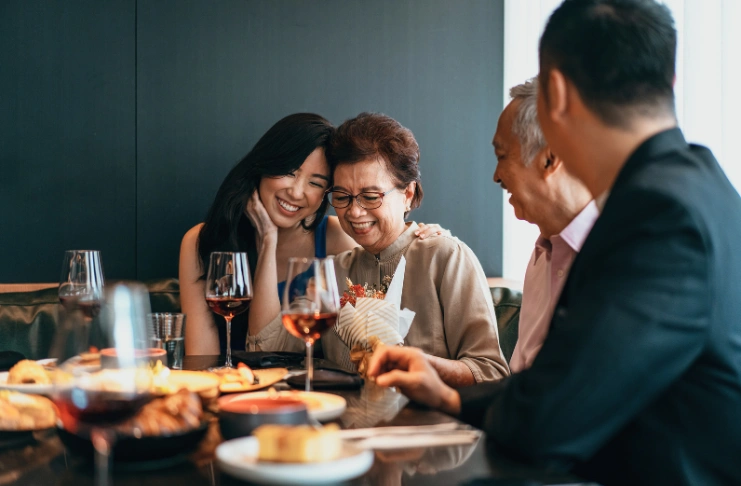
Keep a binder or logbook where guests can register their birthdays or anniversaries. Offer a small free meal or dessert for those occasions. This adds value and captures customer data you can use for future offline or hybrid campaigns (e.g., mailing birthday postcards with offers).
It’s also a point of conversation and connection—people remember where they were treated well on their birthdays.
Highlight Meal Bundles for Families or Groups
Use menu inserts or table signage to spotlight bundled meals that offer savings for groups. These may be family platters, weekend brunch sets, or shared dinner combos. Keep the price clear and the value obvious.
Families and large parties often make decisions based on simplicity and speed. Bundles do both: They reduce decision time and increase sales per table. These promotions work well when consistently visible on all offline marketing materials, from menu boards to to-go packaging.
Turn Packaging Into a Marketing Tool
Include a printed flyer or postcard with every takeout or delivery order. Use this space to announce upcoming events, promote the loyalty program, or offer discounts on the next dine-in visit.
Print quality matters here. It should feel like a branded experience, not an afterthought.
Case Study: How McDonald’s Uses Offline Marketing to Stay Unmissable
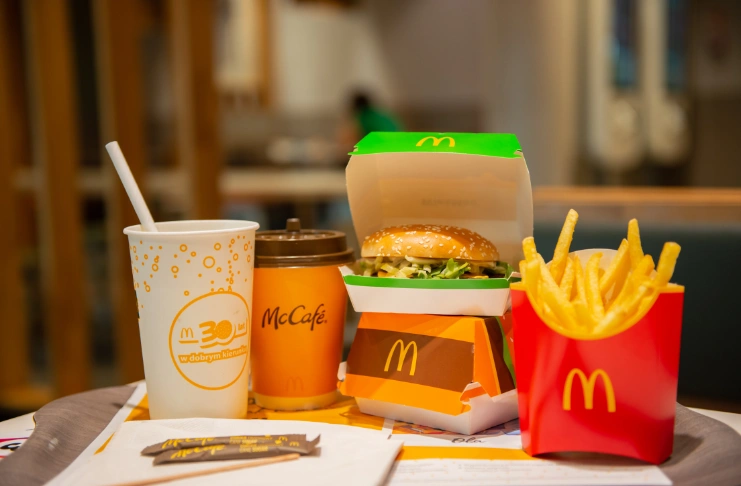
For a brand that dominates digital real estate, McDonald’s invests heavily, almost counterintuitively, in the physical world. But that’s precisely the point.
The fast-food giant’s offline campaigns don’t merely complement digital; they do what digital can’t: anchor the brand in immediate, memorable, and tangible real-world experiences.
Below, three standout campaigns show how McDonald’s has mastered the art of offline marketing in ways that build brand authority, increase foot traffic, and deepen emotional resonance.
“Follow the Arches” Campaign
In one of its most design-forward campaigns, McDonald’s Canada deconstructed its logo to guide drivers, without using a single word.
These billboards didn’t show burgers or the logo. They simply used cropped portions of the golden arches, bent like arrows, with messages like “Next right” or “Just ahead.” They were striking because they were silent.
Why it worked:
- Instant recognition: The golden arches are among the most globally recognized brand marks. This campaign leveraged that equity to eliminate noise, not add to it.
- Functional design: The signs served a real purpose: wayfinding. And by offering actual utility, the brand became part of the environment.
- Signal confidence: It takes a strong brand to remove its name. McDonald’s used visual shorthand as a power move—subtle, assertive, unforgettable.
Scented Billboards in the Netherlands
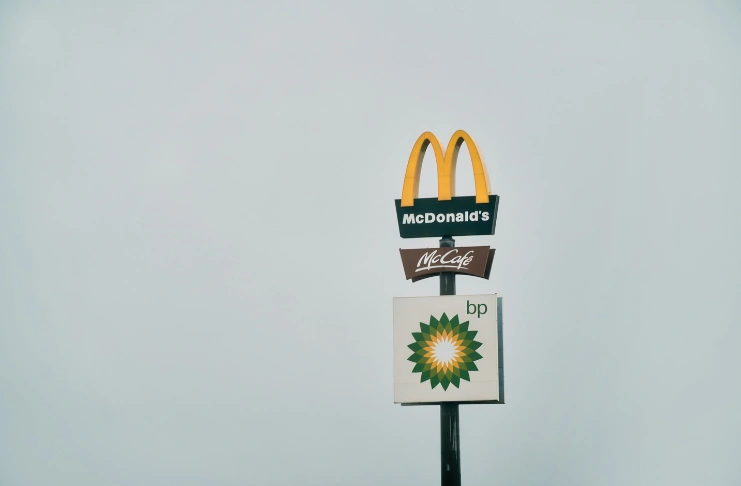
In 2024, McDonald’s Netherlands launched the world’s first scented billboard. The installation didn’t display a burger or even McDonald’s name. Instead, pedestrians within a 15-foot radius caught the unmistakable smell of its fries, ventilated through hidden tech embedded inside modernist, minimalist red-and-yellow structures.
Why it worked:
- Sensory science: Smell is neurologically more tied to memory than sight. By engaging the senses, McDonald’s targeted its audience’s emotional memory.
- Subtlety over spectacle: With no logo, QR code, or copy, the campaign dared people to interpret. The smell was the CTA.
- Foot traffic by design: The billboards were installed within 600 yards of actual outlets. The smell was a breadcrumb trail to a real destination.
1984 Olympics Giveaway
Perhaps one of the most audacious offline promotions in corporate history, McDonald’s tied its menu to national athletic performance at the 1984 Olympics. Scratch cards were handed out in stores and linked to specific Olympic events. If the U.S. team medaled in your event, you got free food [Big Macs for gold, fries for silver, and Cokes for bronze]. The idea was to stoke national pride. And it worked.
Conclusion
Offline restaurant marketing remains a powerful tool to foster a connection with the local community. By blending traditional strategies with digital efforts, restaurants can enhance visibility, drive foot traffic, and build lasting customer loyalty in ways online channels alone can never achieve.
Frequently Asked Questions
1. How do I market my restaurant locally?
Engage with local events, partner with nearby businesses, leverage local advertising, and ensure your restaurant is visible in community spaces. Using offline channels like flyers, billboards, and local sponsorships can help boost foot traffic.
2. What is offline marketing examples?
Offline marketing examples include billboards, flyers, direct mail, event sponsorships, and print ads. These traditional methods reach customers without relying on digital platforms.
3. What is the best marketing strategy for restaurants?
The best strategy combines both digital and offline methods. Focus on creating a strong local presence through events, community involvement, and targeted local advertising while also enhancing your online visibility through local SEO and social media.
4. What are the 4 P’s of marketing for restaurants?
The 4 P’s of marketing for restaurants are Product, Price, Place, and Promotion. These elements help define your restaurant’s offerings, pricing strategy, location, and how you reach your customers.
5. What are examples of traditional marketing?
Examples of traditional marketing include TV and radio ads, print media (newspapers, magazines), billboards, flyers, and direct mail campaigns.
6. What type of marketing do restaurants use?
Restaurants use a combination of online marketing and offline marketing methods, such as social media marketing, local SEO, event promotions, direct mail, and in-store promotions, to attract and retain customers.
7. What are the 5 P’s of traditional marketing?
The 5 P’s of traditional marketing include Product, Price, Place, Promotion, and People. These factors work together to shape a restaurant’s strategy and customer engagement.
8. What are the 7 P’s of traditional marketing?
The 7 P’s of traditional marketing are Product, Price, Place, Promotion, People, Process, and Physical Evidence. These factors are essential for creating a well-rounded restaurant marketing strategy.
9. What is an offline marketing strategy?
An offline marketing strategy includes traditional methods such as billboards, flyers, event sponsorships, and local newspaper ads to build brand awareness and attract local customers.
10. How do you advertise offline?
Offline advertising can be done through billboards, print ads, flyers, direct mail campaigns, and sponsoring local events. These methods connect your restaurant with the community and drive foot traffic.




